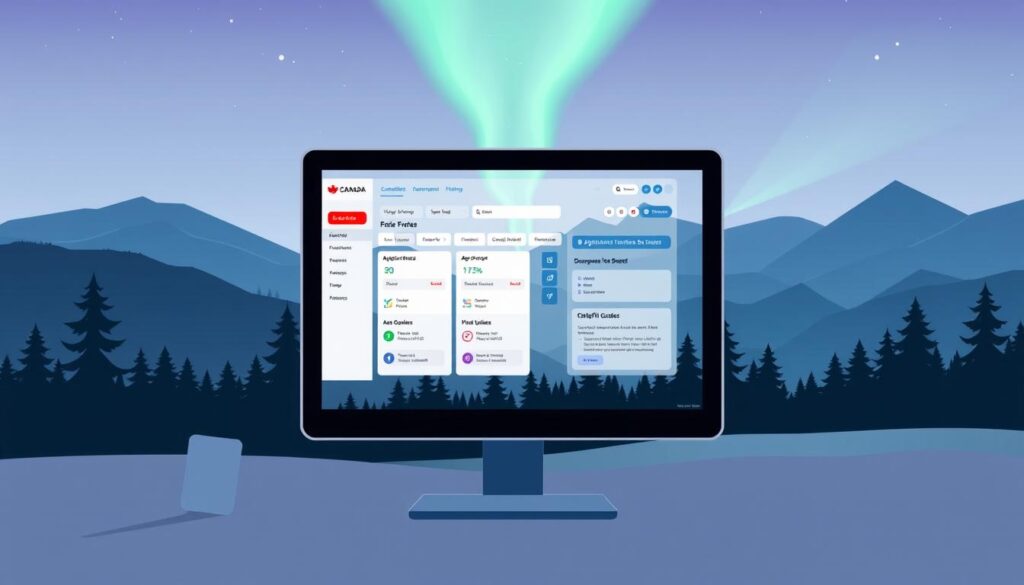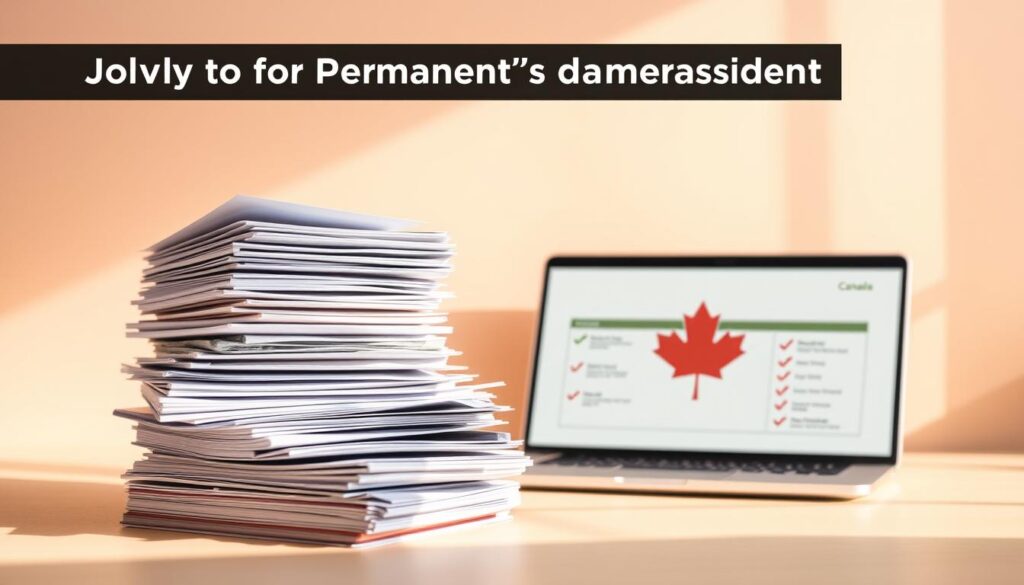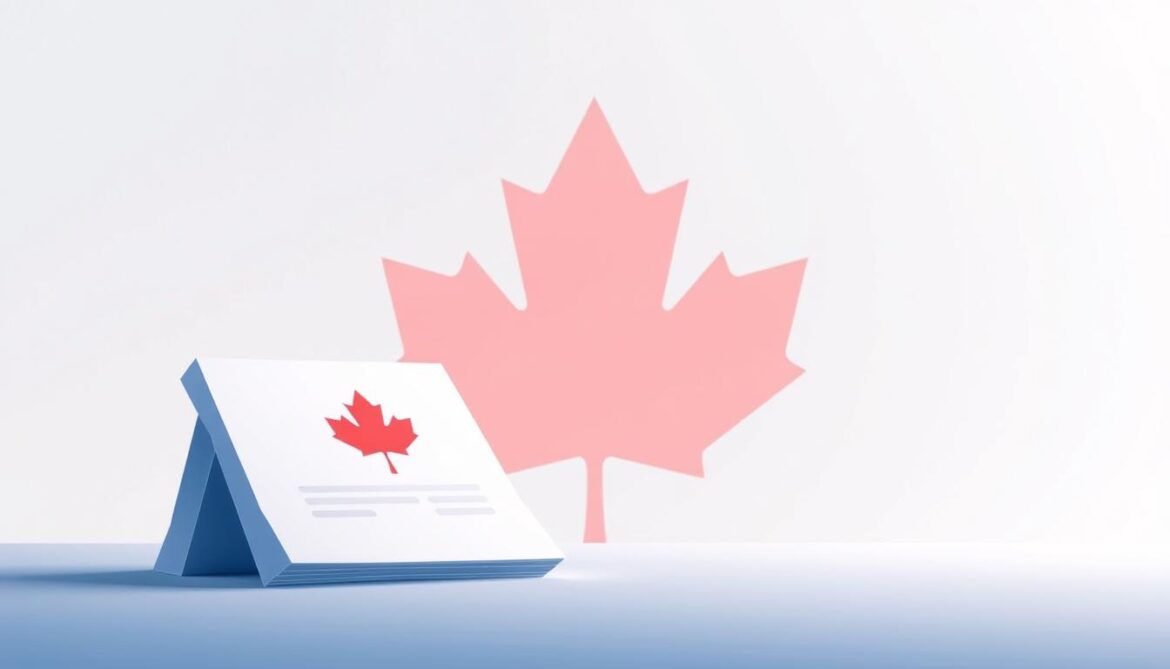Did you know over 400,000 people successfully transition to life in Canada each year? Whether you dream of accessing world-class healthcare, securing stable work rights, or reuniting with family, understanding the immigration process is your first step.
The Canada Visa Portal simplifies digital submissions, ensuring accuracy and speed. Multiple pathways exist, including Express Entry, Provincial Nominee Programs (PNPs), and family sponsorship—each with unique requirements.
Preparing the right documents and knowing fee structures early saves time. This guide helps you navigate every stage confidently, turning complex steps into clear actions.
Understanding Permanent Residence in Canada
Gaining legal status in Canada opens doors to numerous benefits. Unlike temporary visas, this status allows you to live, work, and study anywhere in the country indefinitely. It’s a step toward full citizenship while offering immediate stability.
What Does Permanent Residence Mean?
Holders enjoy most rights of Canadian citizens, except voting or holding high-security government jobs. Your status is confirmed by a PR card, valid for five years and renewable.

Key Advantages of PR Status
Healthcare access is guaranteed through provincial plans. You can also:
- Work for any employer without restrictions
- Sponsor relatives to join you
- Access social services like education subsidies
| Feature | Permanent Resident | Citizen |
|---|---|---|
| Voting Rights | No | Yes |
| Passport Validity | PR Card (5 years) | Canadian Passport |
| Residency Requirement | 1,095 days for citizenship | None |
Tax benefits and travel flexibility make this status attractive. Unlike temporary permits, you won’t need employer sponsorship to switch jobs.
Eligibility Requirements for Permanent Residence
Meeting the right conditions is your gateway to settling in Canada long-term. Whether through skilled migration or family ties, each pathway has benchmarks to ensure you qualify. Here’s how to assess your fit.

General Eligibility Criteria
All applicants must meet baseline standards. These include:
- Language proficiency: Minimum IELTS/CELPIP scores for English or TEF for French.
- Educational equivalence: An approved credential assessment proving your degrees match Canadian standards.
- Proof of funds: Savings to support yourself (and family) unless you have a valid job offer.
Medical and criminal checks are mandatory. You’ll need a clean record and admissible health status.
Specific Program Requirements
Pathways vary widely. Below are key differences:
| Program | Key Requirements | Points Focus |
|---|---|---|
| Express Entry | CRS score ≥ 470 (varies by draw), skilled work experience | Age, education, language |
| Provincial Nominee Program | Occupation in demand, provincial nomination | Regional labor needs |
| Atlantic Immigration Program | Job offer from designated employer | Local employer support |
Note: Quebec selects skilled workers separately, requiring French proficiency. Caregivers need specific work experience. Always check updates—criteria shift yearly.
How to Apply for Permanent Residence in Canada
Navigating Canada’s immigration pathways requires careful planning. Each program has unique steps, from selecting the right option to submitting error-free paperwork. Here’s how to streamline the process.
Choosing the Right Immigration Program
Federal and provincial options cater to different needs. Compare key features before committing:
| Program Type | Best For | Processing Time |
|---|---|---|
| Express Entry | Skilled workers with high CRS scores | 6–8 months |
| Provincial Nominee | Those with job offers in specific regions | Varies by province |
| Family Sponsorship | Reuniting with relatives in Canada | 12–24 months |
Tip: Match your National Occupational Classification (NOC) code precisely. Errors here cause rejections.
Preparing Your Application Package
After receiving an Invitation to Apply (ITA), you have 60 days to submit. Gather these essentials:
- Identity proofs: Passports, birth certificates.
- Police certificates: From every country you’ve lived in for 6+ months.
- Relationship documents: Marriage certificates, custody agreements.
Non-English/French papers need certified translations. Photocopies must be notarized. If using a representative, include form IMM 5476.
Note: Common-law partners must complete IMM 5409. Double-check each item against your personalized checklist.
Using the Canada Visa Portal for Your Application
Streamlining your journey to Canada starts with mastering the digital tools at your fingertips. The Canada Visa Portal centralizes submissions for PR cards, travel documents, and more. Designed for clarity, it reduces errors and speeds up processing.

Creating an Account on the PR Portal
Begin by registering with a GCKey—a secure login for government services. Follow these steps:
- Visit the official portal and select “Sign Up”.
- Enable two-factor authentication for added security.
- Link your profile to an email for updates.
Agents use the separate Representative Portal, requiring authorization forms.
Navigating the Portal Interface
Once logged in, the dashboard displays:
| Feature | Purpose |
|---|---|
| Document Upload | Accepts PDFs, JPEGs (max 4MB) |
| Status Tracker | Real-time updates on submissions |
| Secure Messaging | Direct contact with IRCC |
Mobile optimization lets you manage tasks on-the-go. For technical issues, contact support via the portal’s help section.
Pro tip: Bookmark the login page to avoid phishing scams.
Step-by-Step Guide to Filling Your Application
Precision in paperwork separates successful applicants from those facing delays. Whether through Express Entry or a provincial program, each field you complete impacts processing speed. Follow these steps to ensure accuracy.

Completing the Online Forms
Start with IMM 0008, the core form for all pathways. Key tips:
- Match employment records to your NOC code exactly—variances trigger reviews.
- Use YYYY-MM-DD format for dates. Inconsistencies cause rejections.
- List all travel history, including short trips. Gaps raise red flags.
“Incomplete or inconsistent forms are the top reason for returned submissions.”
Uploading Required Documents
Scanned documents must meet strict standards. Reference this table:
| Document Type | Specifications |
|---|---|
| Passport Pages | 300 DPI, colour, all edges visible |
| Translations | Certified translator + affidavit |
| Proof of Funds | Bank-stamped, ≤3 months old |
Common Mistakes to Avoid
Even minor oversights delay permanent residency approval. Watch for:
- Express Entry profiles with outdated job offers.
- Unnotarized copies of diplomas or marriage certificates.
- Fee payments without receipts or incorrect amounts.
Update your profile if personal details change post-submission. Use the IRCC webform for corrections.
Paying Fees and Submitting Your Application
Completing your journey to Canada requires careful attention to fees and final submission steps. Missing a payment or document can delay processing by months. Here’s how to navigate this phase flawlessly.

Understanding the Fee Structure
Costs vary by pathway and family size. As of April 2024:
- Principal applicant: $1,365 CAD (includes right permanent residence fee).
- Spouse/partner: Add $1,365 CAD.
- Dependent children: $230 CAD each.
The RPRF ($515 CAD) is refundable if denied. Biometrics cost $85 CAD per person.
Payment Methods and Tips
Pay online via the IRCC portal for instant confirmation. Accepted options:
| Method | Best For |
|---|---|
| Credit card | Immediate receipts; use cards with no foreign fees. |
| Bank draft | If mailing documents; ensure it’s in CAD. |
Tip: Save payment receipts digitally and print copies. Missing proof halts processing.
Final Review and Submission
Before you submit application materials:
- Verify all forms are signed electronically.
- Confirm document scans meet resolution requirements.
- Check your Express Entry profile expiry date.
Once submitted, you’ll receive a confirmation card in your portal. Track updates there—adding documents later requires a webform.
After Submission: What to Expect
Once your documents are submitted, the waiting period begins. Processing times vary based on your pathway and current IRCC workload. Most Express Entry cases conclude within six months, while provincial nominations may take longer.
Processing Times and Updates
Track your status using the IRCC processing time tool. Key milestones include:
- Medical exam validity: 12 months from completion date
- Passport request (PPR): Typically arrives 1-2 months before final decision
- COPR verification: Confirmation of Permanent Residence document review
Delays occur if:
- Additional documents are requested
- Security checks require extended screening
- Your medical results expire during processing
Next Steps After Approval
Upon receiving your COPR, complete these actions:
| Task | Timeline |
|---|---|
| PR card production | 61 days from landing |
| SIN application | Immediately after arrival |
| Provincial health card | Varies by region (typically 3 months) |
Essential reminders:
- Update your address within 72 hours of moving
- Maintain residency obligations (730 days in Canada per 5 years)
- Attend landing interviews when scheduled
“Keep copies of all immigration documents for seven years—they’re required for citizenship applications.”
Conclusion
Your journey to settling in Canada is now clearer with these steps. From selecting the right program to submitting error-free documents, each phase matters.
Stay proactive. Monitor updates through the IRCC portal and consider authorized representatives to simplify the process. Missed deadlines or incomplete forms delay approvals.
After approval, focus on integration—apply for a SIN, healthcare, and plan for citizenship. Common refusals stem from incorrect paperwork or expired medicals. Reapply with corrections if needed.
Ready to begin? Use official resources like the Canada Visa Portal for accurate guidance. Your future in Canada starts today.
FAQ
What is permanent residence in Canada?
What are the benefits of becoming a permanent resident?
How do I know if I’m eligible for permanent residency?
Which immigration program is right for me?
What documents do I need for my application?
How do I create an account on the PR portal?
What are common mistakes to avoid when applying?
How much does it cost to apply?
FAQ
What is permanent residence in Canada?
It’s a status that allows you to live, work, and study in Canada indefinitely. You gain many rights similar to citizens but must renew your PR card every five years.
What are the benefits of becoming a permanent resident?
You get access to healthcare, education, and social services. You can also apply for citizenship after meeting residency requirements and sponsor eligible family members.
How do I know if I’m eligible for permanent residency?
Eligibility depends on factors like age, education, work experience, and language skills. Programs like Express Entry and the Provincial Nominee Program have specific criteria.
Which immigration program is right for me?
The best program depends on your qualifications. Express Entry suits skilled workers, while the PNP targets those with provincial job offers or connections.
What documents do I need for my application?
Typically, you’ll need proof of identity, education, work experience, language test results, and police certificates. Check your program’s checklist for specifics.
How do I create an account on the PR portal?
Visit the Immigration, Refugees and Citizenship Canada (IRCC) website, click “Sign in,” and follow the prompts to register with your email and personal details.
What are common mistakes to avoid when applying?
Missing documents, incomplete forms, or outdated information can delay processing. Double-check all entries and ensure translations are certified if needed.
How much does it cost to apply?
Fees vary by program. For Express Entry, the main fee is
FAQ
What is permanent residence in Canada?
It’s a status that allows you to live, work, and study in Canada indefinitely. You gain many rights similar to citizens but must renew your PR card every five years.
What are the benefits of becoming a permanent resident?
You get access to healthcare, education, and social services. You can also apply for citizenship after meeting residency requirements and sponsor eligible family members.
How do I know if I’m eligible for permanent residency?
Eligibility depends on factors like age, education, work experience, and language skills. Programs like Express Entry and the Provincial Nominee Program have specific criteria.
Which immigration program is right for me?
The best program depends on your qualifications. Express Entry suits skilled workers, while the PNP targets those with provincial job offers or connections.
What documents do I need for my application?
Typically, you’ll need proof of identity, education, work experience, language test results, and police certificates. Check your program’s checklist for specifics.
How do I create an account on the PR portal?
Visit the Immigration, Refugees and Citizenship Canada (IRCC) website, click “Sign in,” and follow the prompts to register with your email and personal details.
What are common mistakes to avoid when applying?
Missing documents, incomplete forms, or outdated information can delay processing. Double-check all entries and ensure translations are certified if needed.
How much does it cost to apply?
Fees vary by program. For Express Entry, the main fee is $1,365 CAD for adults, including processing and the right of permanent residence fee.
How long does processing take?
Processing times vary. Express Entry usually takes 6 months, while family sponsorship or PNP streams may take longer. Check IRCC’s website for updates.
What happens after my application is approved?
You’ll receive a Confirmation of Permanent Residence (COPR). If outside Canada, you’ll need a visa to enter and complete the landing process.
,365 CAD for adults, including processing and the right of permanent residence fee.
How long does processing take?
Processing times vary. Express Entry usually takes 6 months, while family sponsorship or PNP streams may take longer. Check IRCC’s website for updates.
What happens after my application is approved?
You’ll receive a Confirmation of Permanent Residence (COPR). If outside Canada, you’ll need a visa to enter and complete the landing process.



